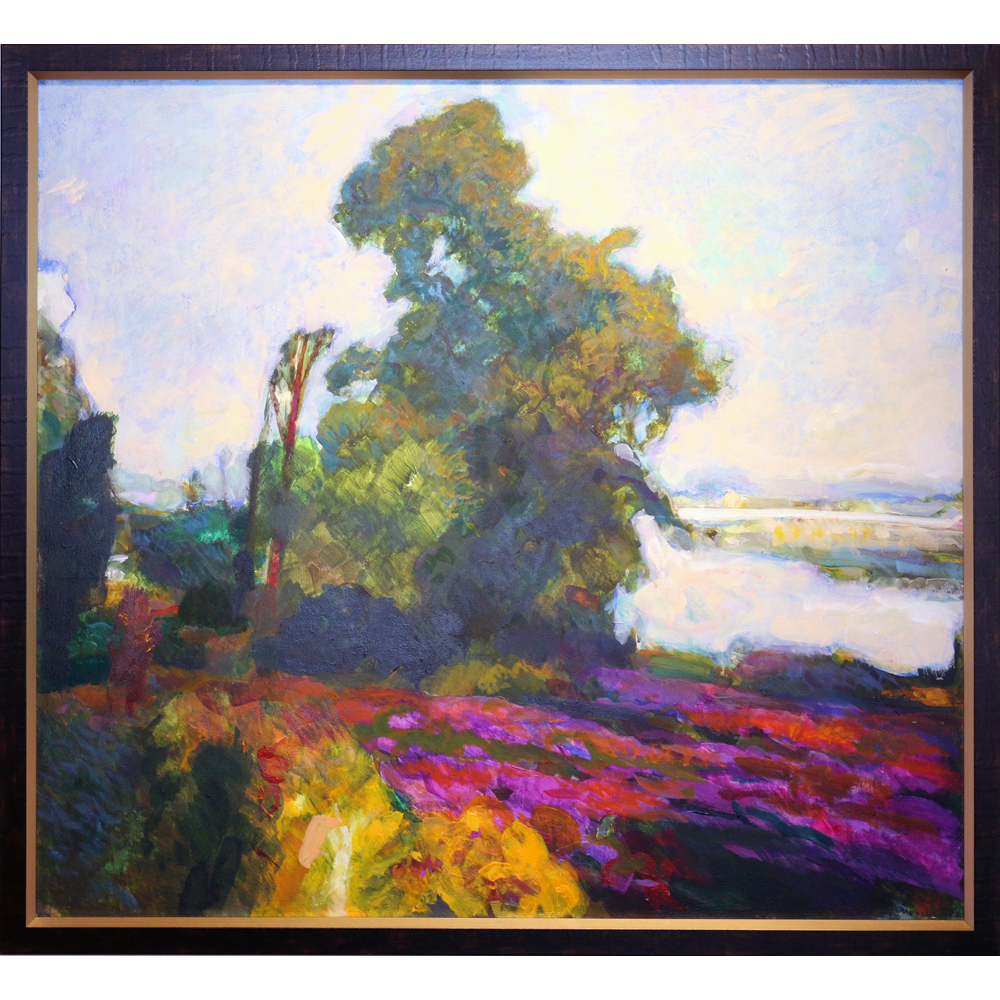Artwork Description
Igor Melnikov – Meadow
Dimensions: 34.5 x 37.75″ framed / 34.5 x 37.75″ unframed
Year: 2017
Medium: acrylic on panel
Russian artist Igor Melnikov’s acrylic on panel work, Meadow, evokes synesthesia, whereby one’s ability to take in sensory information becomes interconnected, such that a sound might evoke a color or a smell a taste. Melnikov’s intricately layered hues is provocative of an experience that extends beyond the realm of the visual into the haptic and musical, suggesting the work’s ability to project itself beyond the confines of the panel. There is a surreal quality to the scene, as if the viewer has stumbled upon the inner workings of the artist’s mind or encountered it within a dream.
Igor Melnikov’s works center about processes of discovery and development. After learning that the black and white images of old master works he looked at as a child were painted in color, Melnikov has oriented his work to allow viewers to attach meaning to the otherwise simple scenes. Many of his paintings portray landscapes and young children—subjects which allow viewers to adapt his visual language into individual understandings. This approach complicates traditional associations between children and innocence, suggesting that Melnikov’s subjects are at once dynamic and open to a broad range of interpretations. Melnikov’s work also focuses on emotion—reworking feelings such as tragedy and happiness. He believes the two coexist, where allowing oneself to experience happiness inexorably makes one vulnerable to tragedy. Within this, Melnikov does not define happiness as mere pleasure; rather, it is something which demands attributes such as courage and touches on wider themes including freedom, dignity, and consciousness. Melnikov’s paintings are collage-like, yet not in the traditional, material sense of the process—instead layering his own psychological explorations onto his understandings of the human condition. While his muted color palettes might appear reductive, they instead focus viewers’ attention on the figures within the work and encourage thorough readings of the detailing that remains visually available.

